
Fundamentals
The core of hair’s vitality resides within the Follicle, a minute, yet mighty, organ nestled beneath the skin’s surface. This living structure, often overlooked in the daily rituals of hair adornment, serves as the very wellspring from which each strand emerges, drawing sustenance and purpose. Follicular health, therefore, describes the optimal physiological state of these individual hair-producing units and the surrounding scalp environment. It encompasses the intricate balance of cellular activity, nutrient supply, blood circulation, and microbial equilibrium necessary for robust hair growth and sustained scalp well-being.
For generations, across diverse cultures and especially within communities of textured hair heritage, the intuitive understanding of this deep connection between the scalp and the strands has guided ancestral care practices. These practices, passed down through the ages, often centered on nourishing the scalp, stimulating circulation, and safeguarding the follicular environment, long before modern science articulated the precise biological mechanisms. The wisdom embedded in these traditions recognized the hair’s genesis point as paramount to its strength, resilience, and appearance.
The significance of follicular health, in its most straightforward interpretation, is the foundation upon which healthy hair is built. A well-tended follicle produces a stronger, more vibrant strand, less prone to breakage or premature shedding. This basic tenet, while seemingly simple, holds profound implications for how we approach hair care, shifting the focus from merely styling the visible strand to truly cultivating the living source beneath.
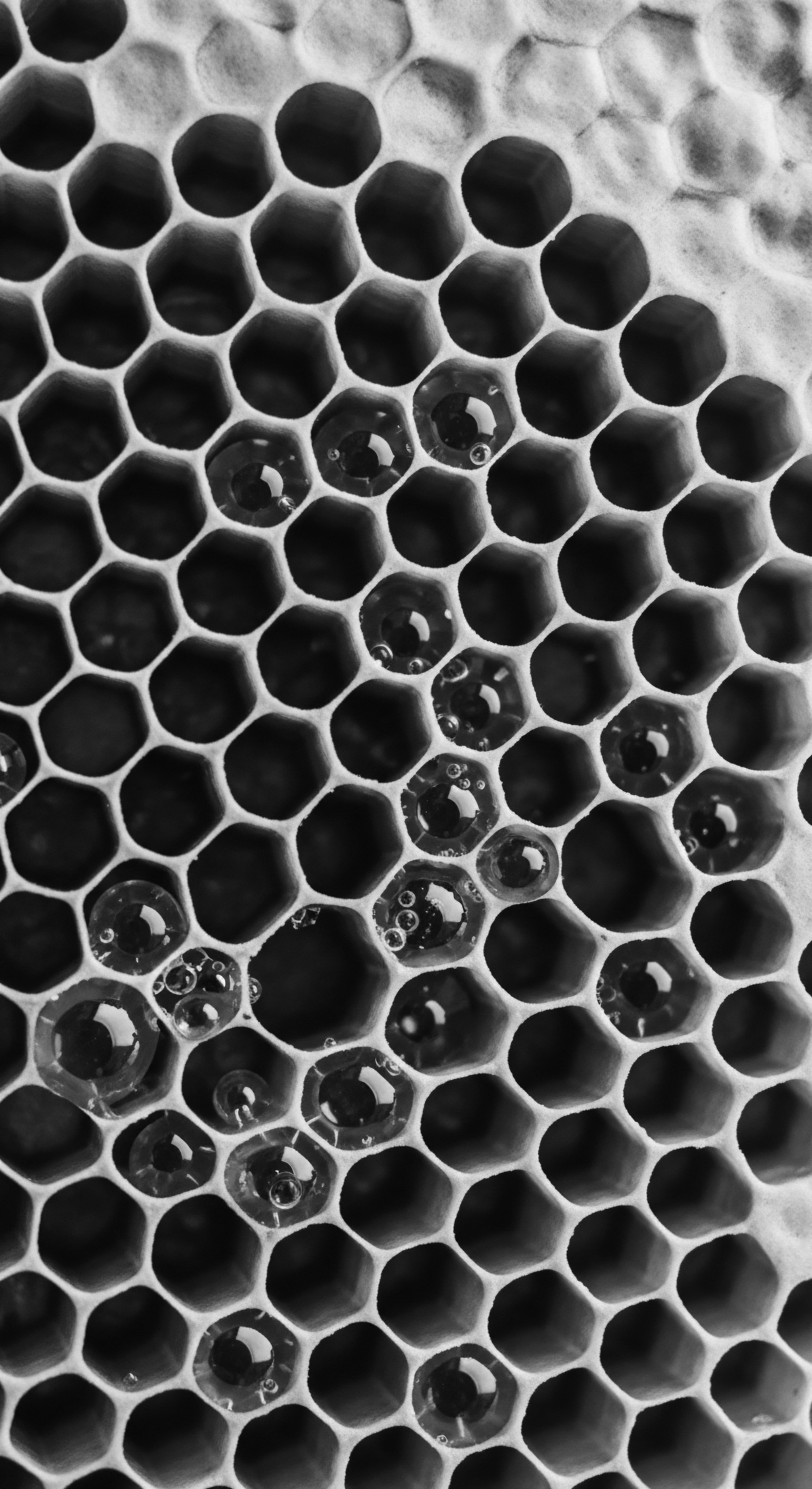
The Root’s Sanctuary ❉ A Primer
Each hair follicle operates as a miniature factory, meticulously crafting the protein filaments that form the hair shaft. At its base lies the Dermal Papilla, a cluster of specialized cells receiving vital nutrients and signals from the bloodstream. Surrounding this is the hair bulb, where active cell division pushes new hair upwards. The sebaceous glands, adjacent to the follicle, produce sebum, a natural oil that lubricates the hair and scalp, contributing to the protective barrier.
Optimal follicular health is the unseen yet powerful force guiding each strand’s journey from genesis to full expression, deeply rooted in the soil of ancestral wisdom.
When these components function in harmony, the follicle remains a sanctuary for growth. Disruptions, whether from internal imbalances or external aggressors, can compromise this delicate ecosystem, leading to various hair and scalp concerns. Understanding this elemental biology, even at a fundamental level, allows for a more informed approach to care, one that honors the living nature of hair from its very inception.
- Scalp Cleanliness ❉ Traditional cleansing rituals often involved natural clays, herbal infusions, or mild soaps, all designed to remove impurities without stripping essential oils, thereby preserving a clean environment for the follicles.
- Circulation Stimulation ❉ Ancestral practices frequently incorporated scalp massages using fingertips or specialized combs, believed to invigorate blood flow to the hair roots, ensuring a steady supply of nutrients.
- Natural Nourishment ❉ Plant-based oils, butters, and extracts, rich in vitamins and fatty acids, were applied directly to the scalp, offering a direct source of sustenance to the developing strands within their follicular homes.
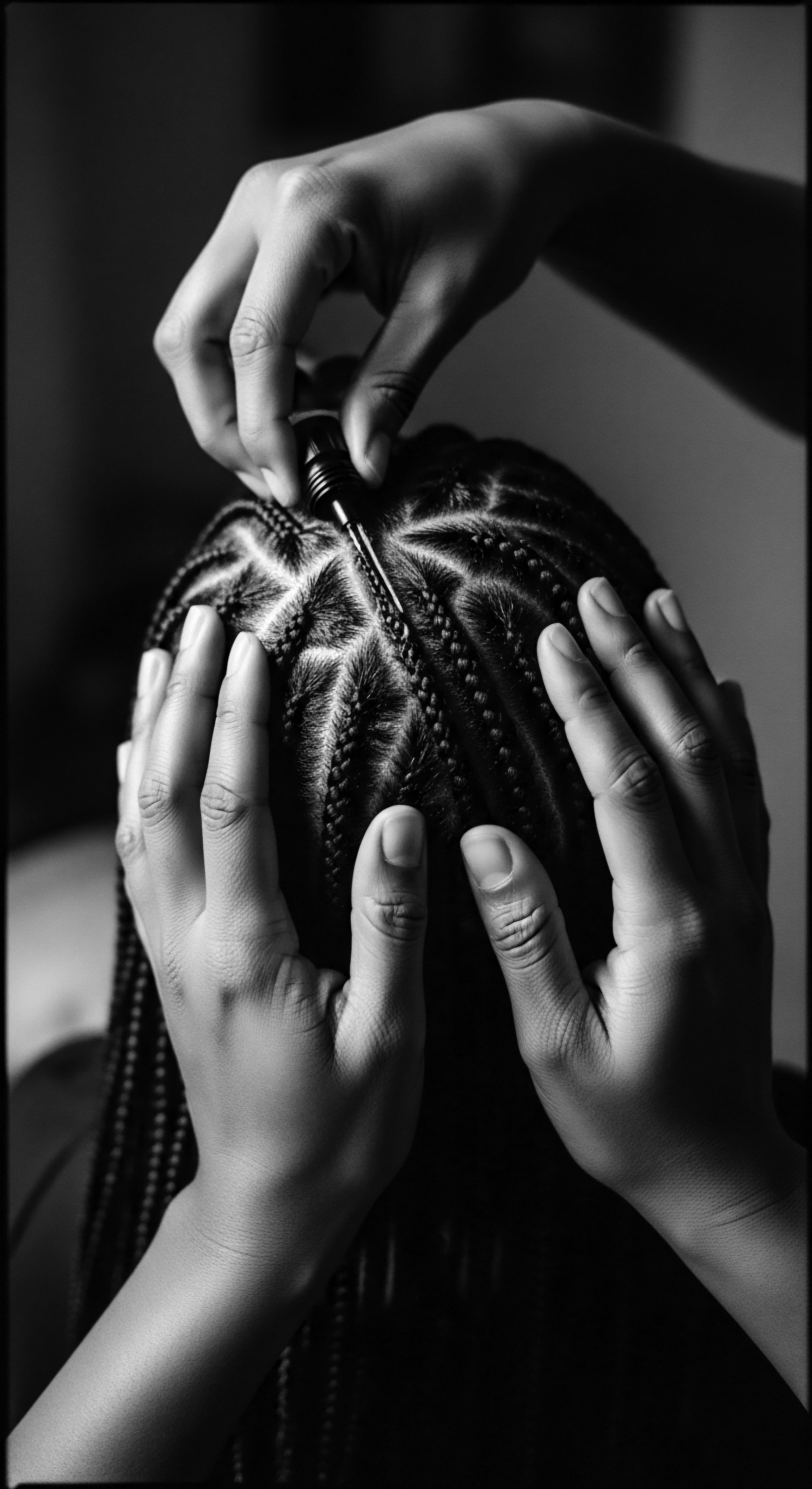
Intermediate
Moving beyond the foundational understanding, the intermediate appreciation of follicular health recognizes its dynamic interplay with both internal physiological processes and external environmental factors. For textured hair, this understanding gains additional layers of meaning, considering the unique structural characteristics of the follicle itself and the historical contexts that have shaped care practices. The distinct helical shape of the textured hair follicle influences the strand’s elliptical cross-section and its characteristic coils, rendering it inherently more prone to dryness and mechanical stress compared to straighter hair types. This inherent fragility necessitates a heightened awareness of follicular well-being.
The meaning of follicular health, at this level, expands to encompass preventative care and the mitigation of historical and contemporary challenges. It involves recognizing the signs of follicular distress, such as excessive shedding, scalp irritation, or diminished growth, and understanding their potential origins. This perspective also acknowledges the cumulative impact of styling choices, product formulations, and even broader societal influences on the health of the hair root.
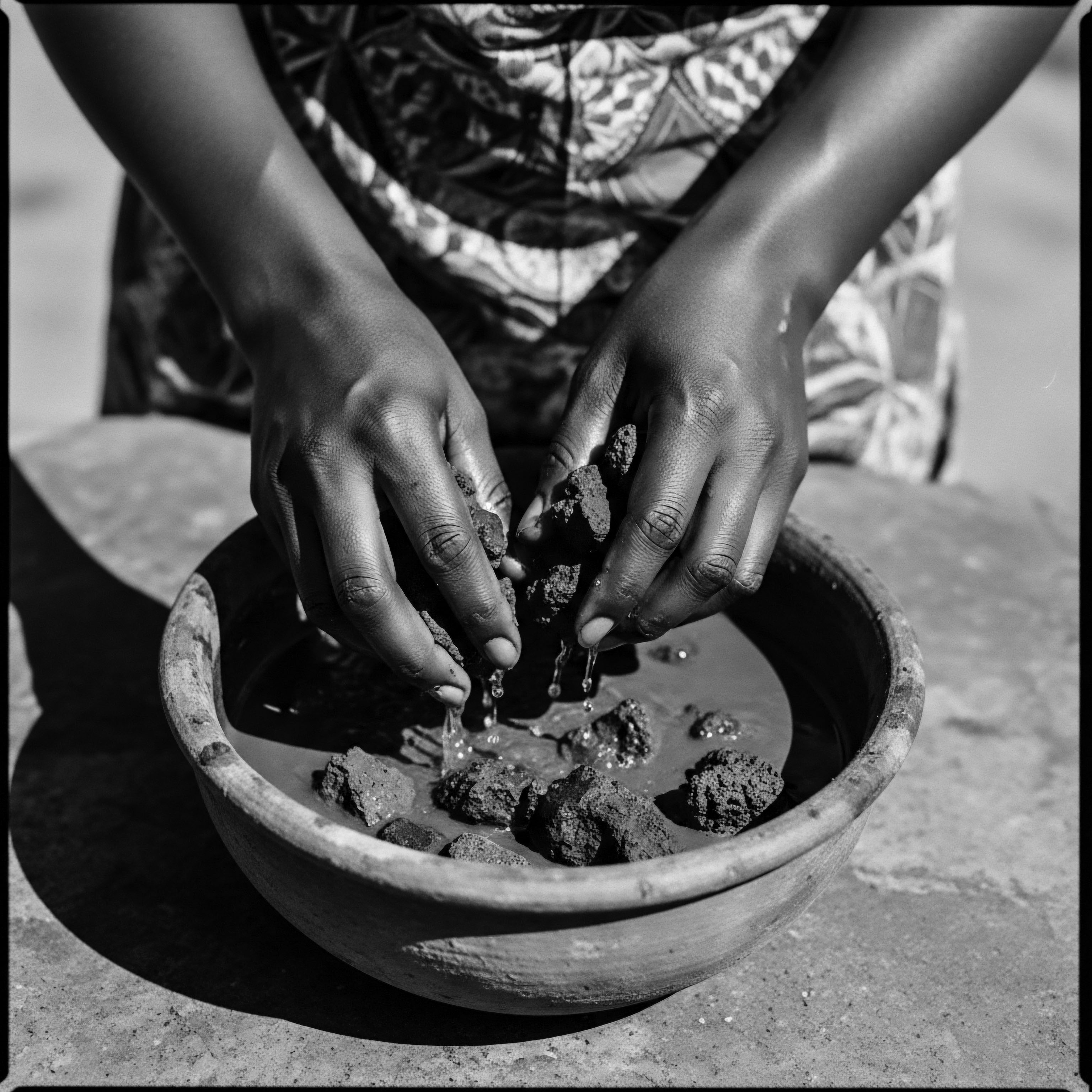
The Heritage of Resilience ❉ Adapting Care
Ancestral communities, particularly those with deep roots in African traditions, developed sophisticated systems of hair care that implicitly safeguarded follicular integrity. These practices were not merely cosmetic; they were deeply integrated into daily life, reflecting social status, spiritual beliefs, and community bonds. The ingenuity of these methods often centered on moisturizing the scalp, using protective styles, and employing natural emollients to counteract the hair’s propensity for dryness and protect the delicate follicle from environmental aggressors.
Follicular health, in the narrative of textured hair, is a testament to ancestral ingenuity, a legacy of adaptive care that honors the unique biology of coiled strands.
Consider the widespread application of plant-derived oils and butters, such as shea butter or palm oil, across various African cultures. These substances, rich in lipids and antioxidants, served as protective balms, sealing in moisture and creating a barrier against harsh sun and arid climates. Their regular application provided topical nutrition to the scalp, fostering an environment conducive to healthy follicular function. The collective grooming rituals, often involving gentle detangling and styling, minimized tension on the follicles, preventing breakage and preserving the hair’s natural growth cycle.
The significance of these traditional approaches cannot be overstated. They represent centuries of empirical knowledge, refined through observation and shared experience, demonstrating an intuitive grasp of what the hair follicle required to thrive. These practices were not just about maintaining hair; they were about preserving a connection to identity, lineage, and communal well-being.
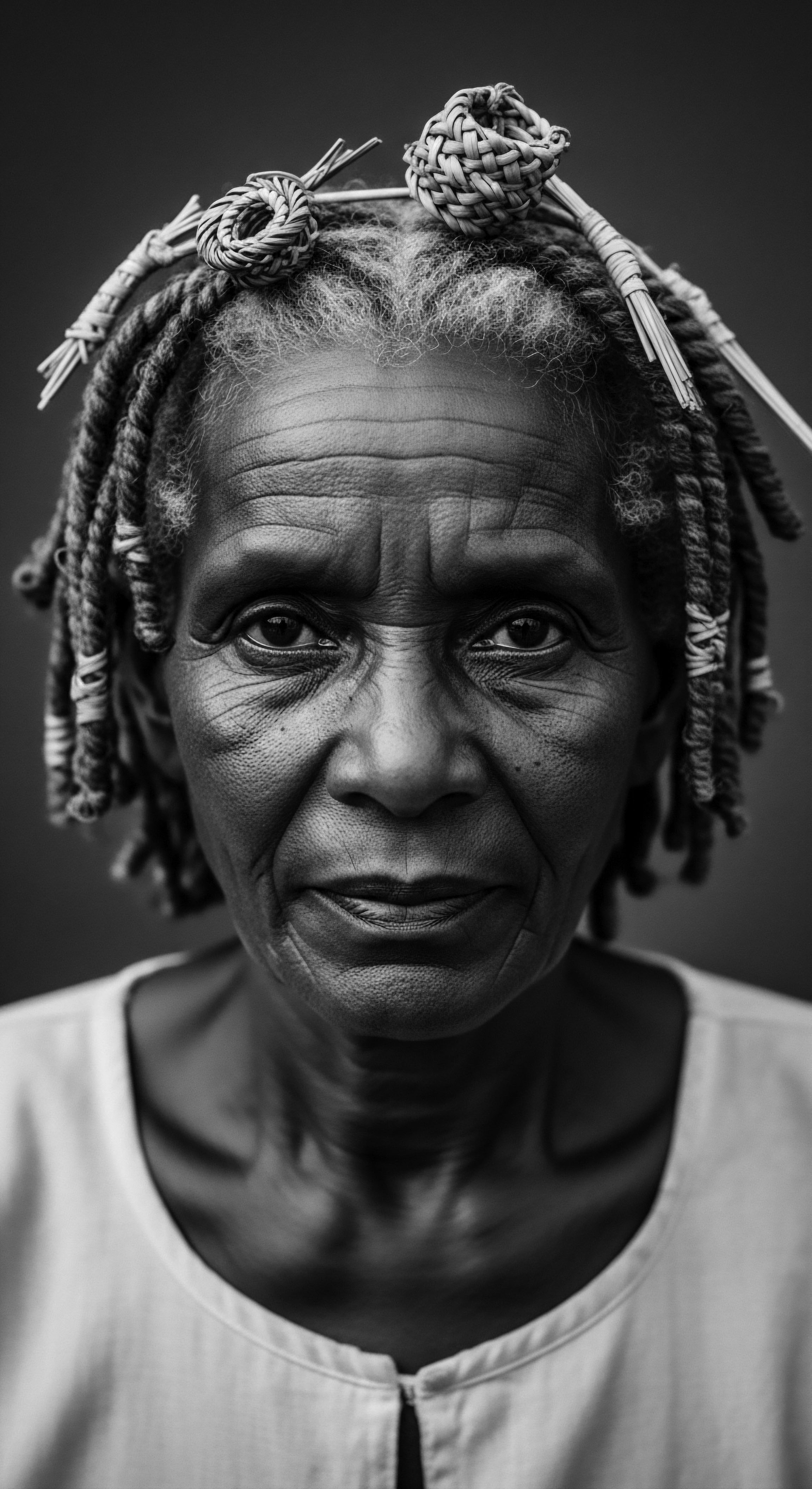
Beyond the Surface ❉ Environmental and Lifestyle Influences
The external environment, from humidity levels to pollutants, directly influences follicular health. In climates where textured hair originated, natural elements like intense sun and dry air necessitated robust protective measures. Traditional head coverings, often intricately wrapped, served a dual purpose ❉ cultural expression and physical shielding of the hair and scalp from damaging elements. These coverings reduced direct sun exposure to the scalp, which could otherwise lead to dryness and inflammation, indirectly preserving follicular vitality.
Lifestyle factors also play a considerable part. Diet, hydration, and stress levels all reverberate through the body, affecting the micro-environment of the hair follicle. A diet lacking essential vitamins and minerals can starve the dermal papilla of the building blocks needed for hair production.
Chronic stress can shift the hair growth cycle, leading to increased shedding. An intermediate understanding acknowledges these systemic connections, advocating for a holistic approach to follicular care that extends beyond topical applications.
The concept of follicular health, therefore, transcends a purely biological definition. It embodies a holistic perspective that integrates biological insights with the enduring wisdom of cultural practices and an awareness of the broader environmental and lifestyle factors that shape the journey of textured hair.
| Aspect of Care Scalp Cleansing |
| Ancestral Practice (Heritage) Herbal infusions (e.g. saponins from plants), fermented rice water, clay washes to purify and balance. |
| Contemporary Approach (Science-Informed) Sulfate-free shampoos, micellar waters, co-washes to gently cleanse without stripping natural oils. |
| Aspect of Care Moisture Retention |
| Ancestral Practice (Heritage) Shea butter, palm oil, coconut oil, animal fats applied directly to scalp and strands. |
| Contemporary Approach (Science-Informed) Leave-in conditioners, hair milks, light oils (jojoba, argan), humectants, and emollients. |
| Aspect of Care Protective Styling |
| Ancestral Practice (Heritage) Intricate braids, cornrows, twists, and wraps, often adorned with beads or cowrie shells, minimizing manipulation. |
| Contemporary Approach (Science-Informed) Braids, twists, buns, and wigs that reduce daily styling stress and protect ends, emphasizing low tension. |
| Aspect of Care Stimulation |
| Ancestral Practice (Heritage) Communal scalp massages, often during grooming rituals, using fingers or specialized combs. |
| Contemporary Approach (Science-Informed) Targeted scalp massages, derma rollers, or brushes designed to increase blood flow, sometimes with stimulating essential oils. |
| Aspect of Care Both historical and modern practices aim to nourish the follicle, illustrating a continuous human quest for vibrant hair health. |
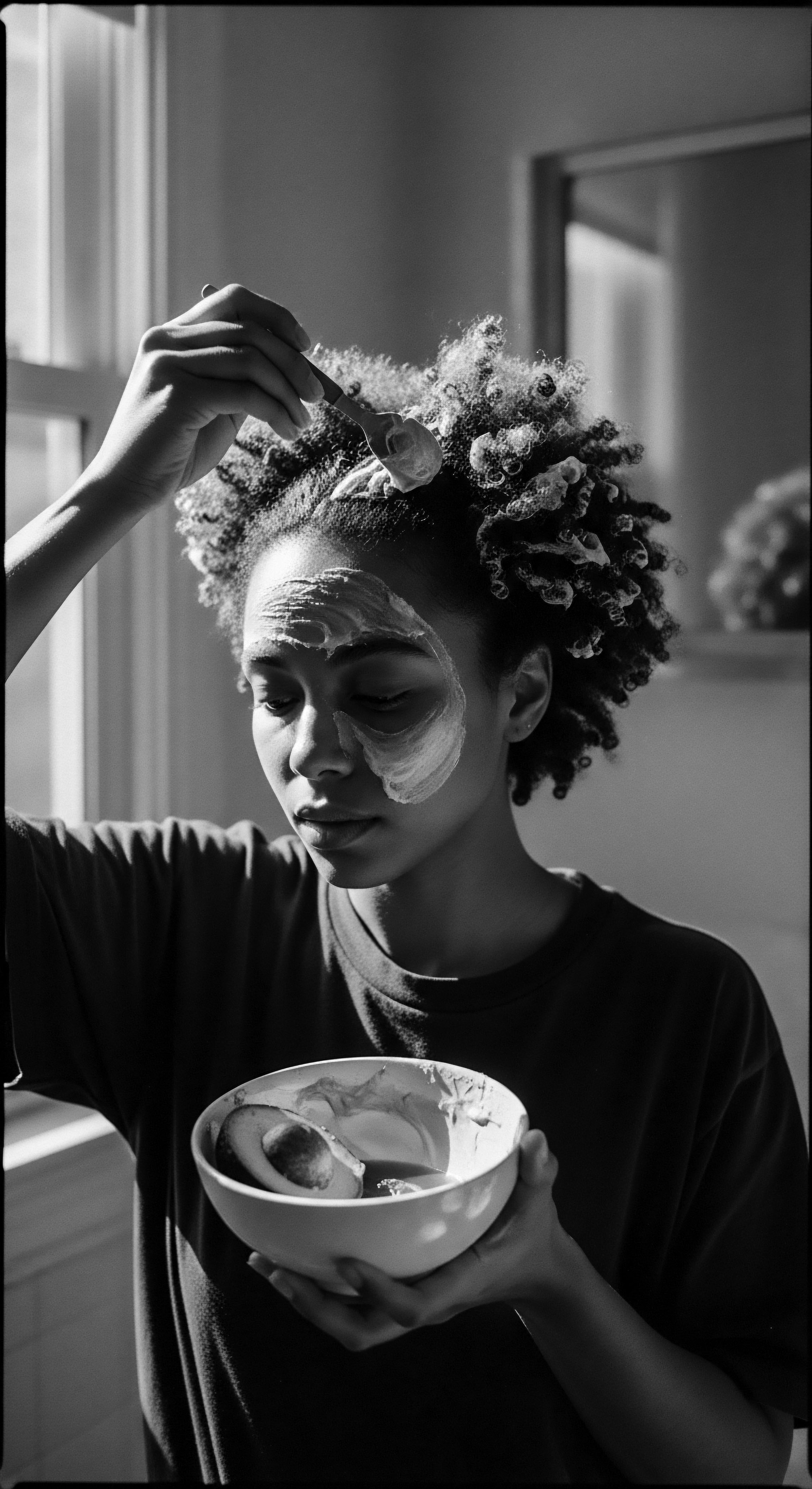
Academic
The academic elucidation of Follicular Health presents a sophisticated understanding, transcending simplistic definitions to encompass the intricate biological, genetic, environmental, and socio-historical determinants that shape its expression, particularly within the diverse phenotypes of textured hair. This scholarly perspective defines follicular health as the sustained physiological integrity and functional capacity of the pilosebaceous unit, inclusive of the hair follicle, sebaceous gland, arrector pili muscle, and associated neural and vascular networks, operating within a dynamic equilibrium to produce a healthy hair fiber and maintain a resilient scalp microenvironment. It is a state characterized by balanced cellular proliferation, appropriate inflammatory responses, robust nutrient delivery, and genetic predisposition, all of which dictate the hair’s growth cycle, fiber morphology, and overall vitality.
From a rigorous academic standpoint, the meaning of follicular health for textured hair communities is inextricably linked to the legacy of ancestral adaptations and the enduring impact of colonial and post-colonial beauty standards. The highly coiled, elliptical hair shaft characteristic of Afro-textured hair originates from a uniquely curved hair follicle, which renders the hair more susceptible to mechanical stress, breakage at the points of curvature, and dryness due to inefficient sebum distribution along the spiraling shaft. This intrinsic morphology demands specific care protocols, often historically developed within indigenous communities, that prioritize moisture retention, gentle handling, and scalp protection.
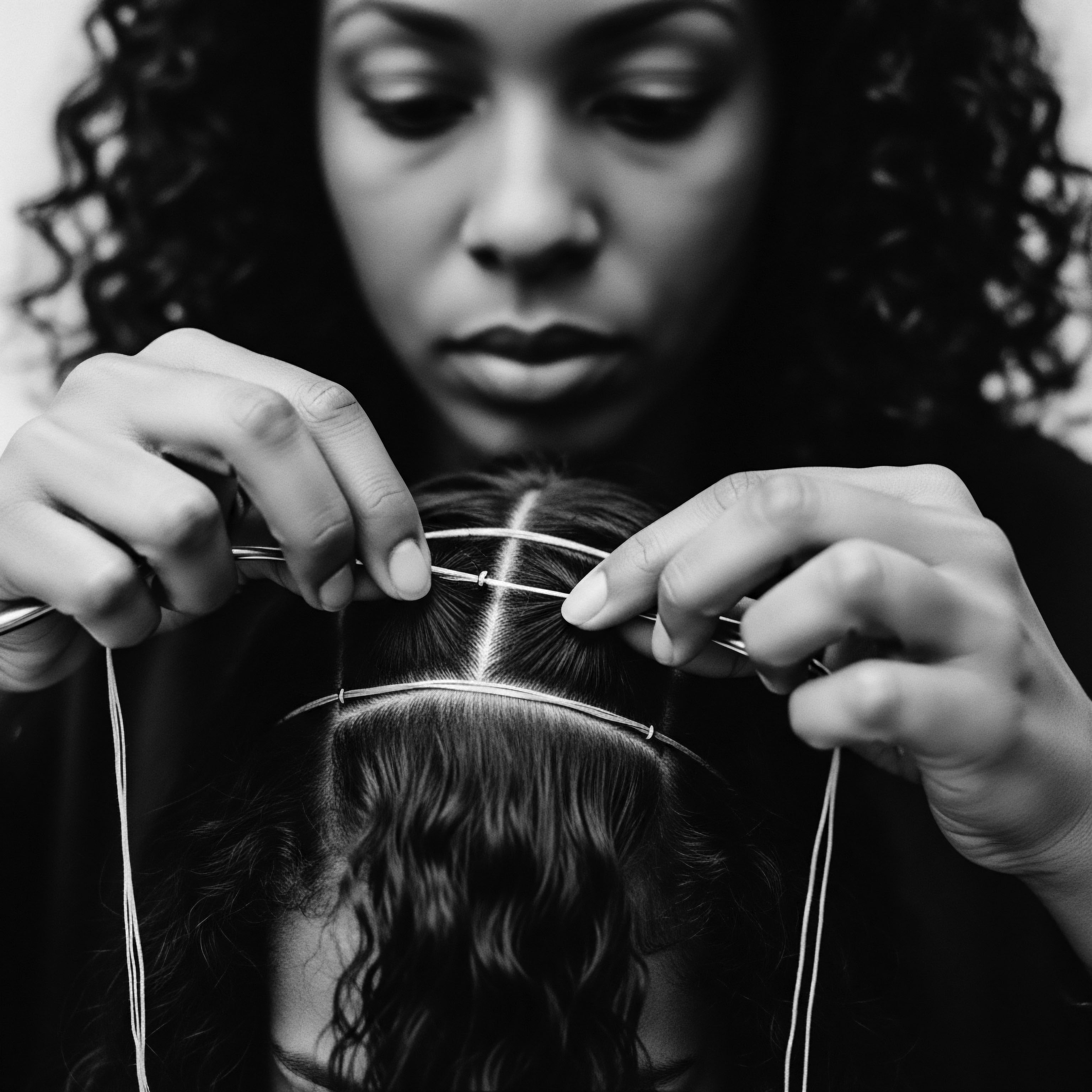
Echoes from the Source ❉ Ancestral Dermatological Wisdom
Pre-colonial African societies possessed a profound, albeit uncodified by Western scientific metrics, understanding of follicular health. Hair was not merely an aesthetic feature; it was a potent symbol of identity, social status, spiritual connection, and communal well-being. Care rituals were often elaborate, communal affairs, reinforcing social bonds while simultaneously tending to the hair and scalp. These practices frequently incorporated local botanicals, animal fats, and mineral clays, applied with an empirical knowledge of their emollient, antimicrobial, and protective properties.
The scholarly pursuit of follicular health reveals a profound truth ❉ the hair follicle is not merely a biological structure, but a historical archive, bearing the imprints of both genetic heritage and lived experience.
For example, the Himba people of Namibia traditionally use a paste called Otjize, a mixture of ochre, butterfat, and aromatic herbs, applied to their hair and skin. This practice, far from being solely ornamental, serves as a comprehensive dermatological intervention. The ochre provides natural sun protection, while the butterfat moisturizes and seals the hair cuticle, preventing excessive moisture loss from the inherently dry, coiled strands.
This continuous application also creates a protective layer over the scalp, shielding the follicles from environmental aggressors and supporting a stable microenvironment. This deep, practical application of botanical and natural resources for follicular maintenance speaks to an ancestral dermatological wisdom, prioritizing the health of the hair’s origin point for both aesthetic and protective purposes.
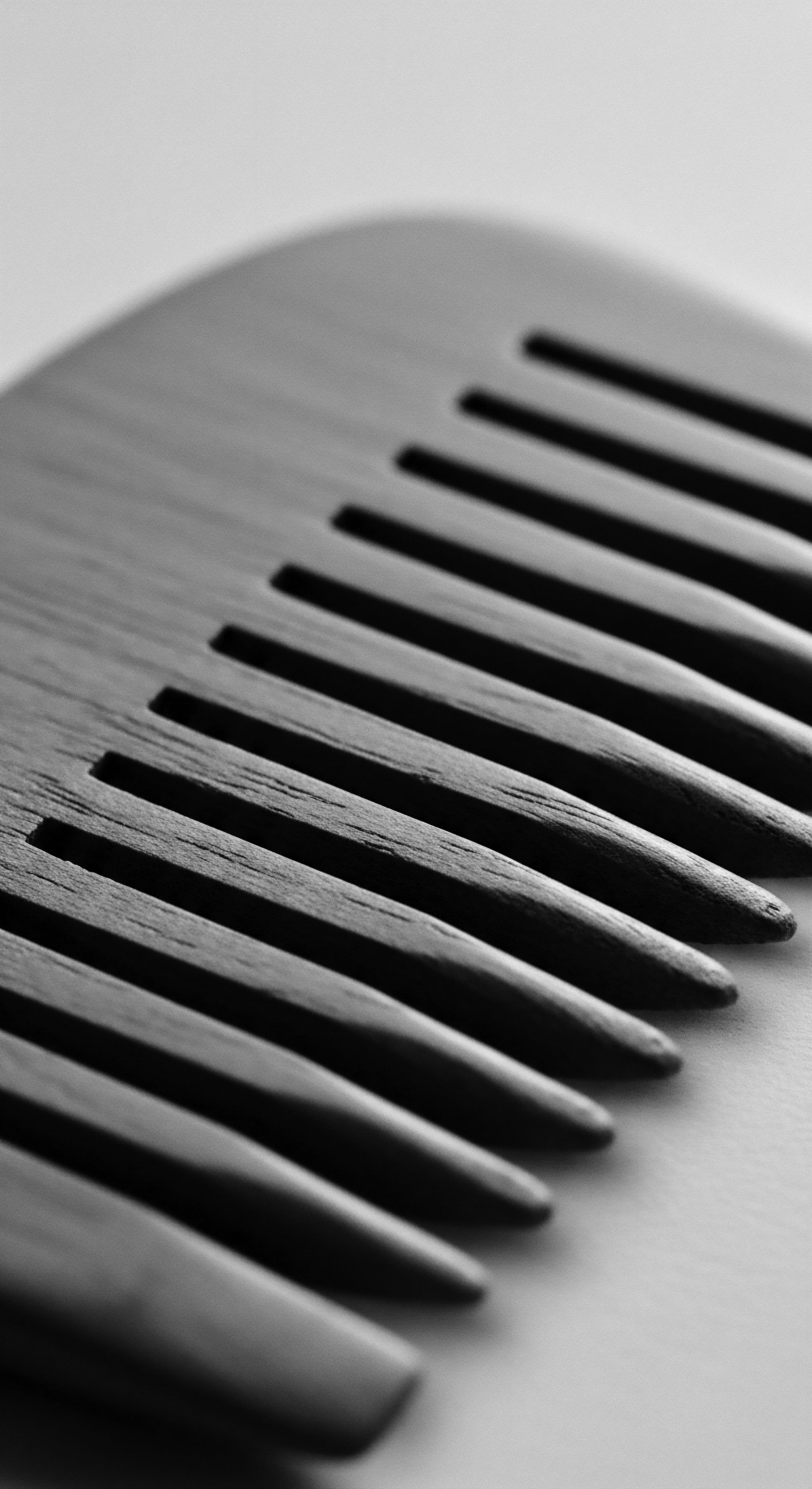
The Unbound Helix ❉ Historical Trauma and Follicular Integrity
The transatlantic slave trade initiated a period of profound disruption, forcibly severing ancestral ties to traditional care practices and introducing new, often detrimental, hair care paradigms. Enslaved Africans, stripped of their cultural identity markers, were compelled to adopt styles that often neglected the inherent needs of their textured hair, leading to widespread scalp ailments and hair loss. This historical trauma laid the groundwork for a persistent struggle with Eurocentric beauty standards that continues to impact follicular health in diasporic communities.
A critical case study illustrating the long-term impact on follicular health involves the widespread adoption of Chemical Relaxers in the 20th century. Driven by societal pressures for conformity to straighter hair aesthetics, millions of Black women began using lye-based or “no-lye” chemical straighteners. These formulations work by irreversibly breaking disulfide bonds within the hair shaft, fundamentally altering its protein structure to achieve a straightened appearance. While achieving the desired aesthetic, the application of these potent alkaline chemicals often resulted in severe scalp burns, inflammation, and damage to the delicate hair follicles.
A 2016 study by Johns Hopkins researchers, led by Crystal Aguh, highlighted the prevalence of Traction Alopecia among African-American women, with an estimated one-third experiencing this form of hair loss. This condition, characterized by gradual hair loss due to prolonged tension on the hair root, is often exacerbated by tight styling practices (braids, weaves, extensions) when applied to chemically treated hair, which is already weakened at the follicular level . The chemical alteration of the hair shaft, combined with the mechanical stress of tension styles, places immense strain on the hair follicle, leading to inflammation, scarring, and eventually, permanent hair loss.
Beyond immediate damage, contemporary research points to more systemic concerns. Studies indicate a correlation between frequent, long-term use of chemical relaxers and increased risks of hormone-related health issues, including uterine fibroids and certain cancers, disproportionately affecting Black women. For instance, a 2019 study published in the International Journal of Cancer suggested a link between frequent use of chemical hair straighteners and a higher risk of breast cancer.
Further, multiple studies have highlighted a connection between early relaxer use and uterine fibroids later in life, a condition affecting up to 80% of Black women during their lifetime . This complex relationship underscores how societal pressures, economic factors, and product formulations have historically and continue to exert a profound influence on the follicular health and overall well-being of Black women.
The academic meaning of follicular health, therefore, must account for these historical and ongoing health disparities. It necessitates a critical examination of product safety, the societal pressures that shape beauty ideals, and the systemic factors that have, at times, undermined the inherent resilience of textured hair. A comprehensive understanding requires interdisciplinary approaches, drawing from dermatology, ethnobotany, public health, and cultural studies, to fully grasp the multifaceted nature of follicular health within the context of Black and mixed-race hair experiences.
- Genetic Predisposition ❉ The unique genetic coding for hair follicle curvature in textured hair impacts sebum distribution and makes strands more prone to dryness, necessitating specific hydration strategies.
- Mechanical Stress ❉ Historically, and presently, certain styling practices, when applied improperly or with excessive tension, can induce traction alopecia, directly compromising follicular viability.
- Chemical Exposure ❉ The historical prevalence of harsh chemical straighteners has introduced systemic health risks and localized follicular damage, altering the scalp’s delicate balance.
- Nutritional Epidemiology ❉ Dietary patterns and nutrient deficiencies can influence the cellular processes within the hair bulb, impacting hair growth cycles and fiber quality, a factor recognized in both ancestral diets and modern nutritional science.
| Historical Period Pre-Colonial Africa |
| Dominant Hair Practice / Product Natural oils, butters, clays; intricate protective styles (braids, locs); communal grooming. |
| Follicular Health Implication Supported robust follicular function through natural conditioning, scalp protection, and minimized tension, reflecting deep ancestral knowledge. |
| Historical Period Slavery Era (16th-19th Century) |
| Dominant Hair Practice / Product Forced shaving; limited access to tools/products; use of harsh substances (e.g. lye, axle grease) for straightening. |
| Follicular Health Implication Severe follicular trauma, scalp burns, widespread hair loss, and the beginning of a disconnection from traditional care. |
| Historical Period Post-Emancipation to Mid-20th Century |
| Dominant Hair Practice / Product Hot combs, pressing oils, early chemical relaxers; emphasis on straightened styles for assimilation. |
| Follicular Health Implication Frequent heat damage, chemical burns, scalp irritation, and increased incidence of traction alopecia due to continuous manipulation and chemical exposure. |
| Historical Period Late 20th Century – Early 21st Century |
| Dominant Hair Practice / Product Refined chemical relaxers, weaves, extensions; growing awareness of health risks. |
| Follicular Health Implication Continued risk of chemical damage, traction alopecia, and systemic health concerns (e.g. fibroids, cancers) linked to chemical ingredients. |
| Historical Period Contemporary Natural Hair Movement |
| Dominant Hair Practice / Product Return to natural textures; emphasis on protective styling, moisturizing, and gentle care; increased demand for non-toxic products. |
| Follicular Health Implication A conscious effort to restore follicular health by reducing chemical and mechanical stress, aligning with ancestral wisdom and scientific understanding of textured hair's needs. |
| Historical Period The journey of follicular health for textured hair reflects a continuous adaptation and reclamation of practices that honor its inherent structure and vitality. |
The academic meaning of follicular health, therefore, extends beyond the mere absence of disease; it is a state of dynamic well-being that is constantly negotiated against a backdrop of genetic inheritance, environmental interactions, and the profound socio-historical forces that have shaped textured hair experiences across generations. A holistic understanding requires a deep appreciation for the ingenuity of ancestral practices, a critical lens on historical and contemporary challenges, and a commitment to scientifically informed, culturally sensitive care.
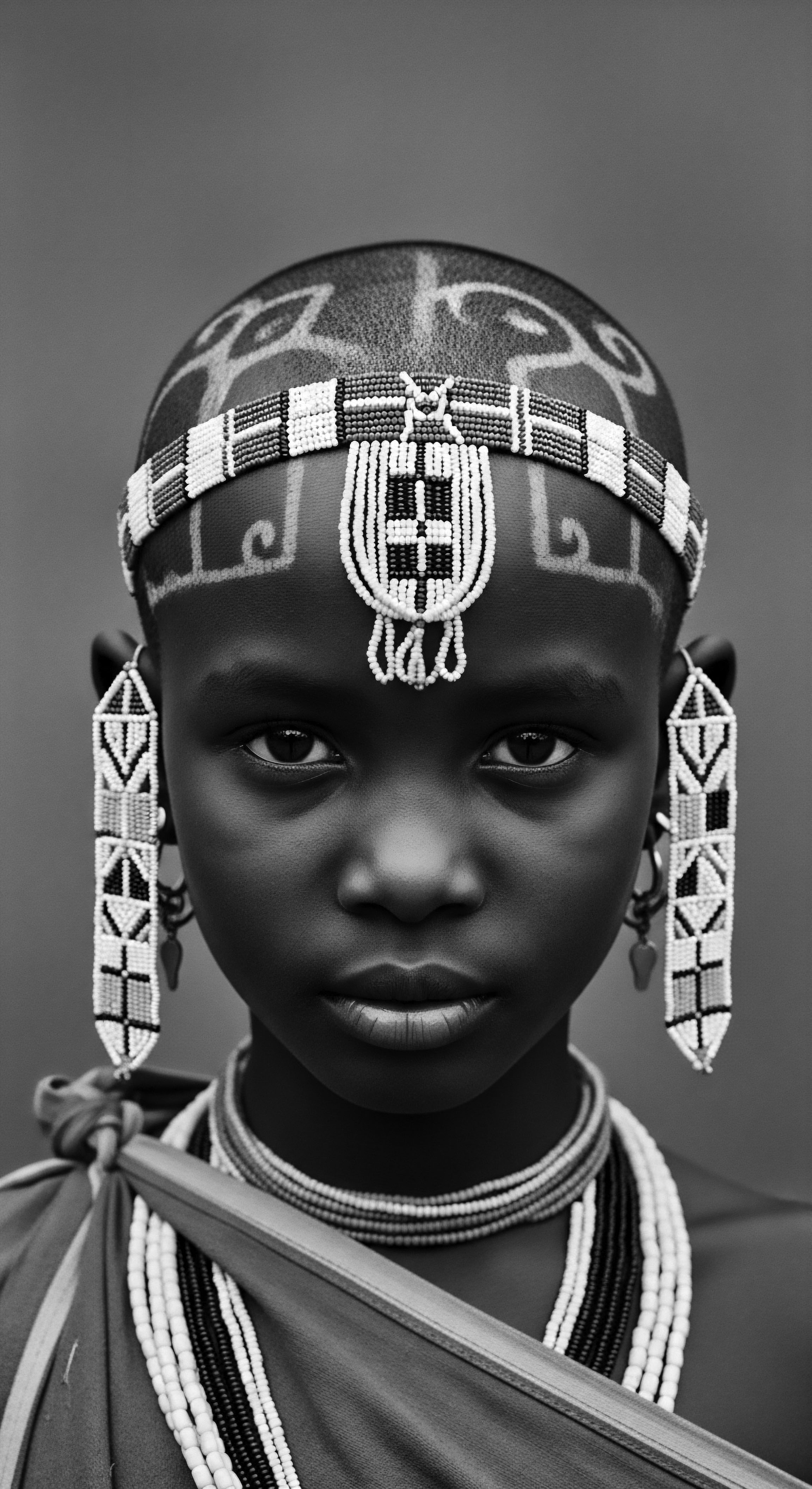
Reflection on the Heritage of Follicular Health
The journey through the intricate world of follicular health, particularly as it pertains to textured hair, culminates in a profound reflection on the enduring spirit of the strand itself. It is a story not simply of biology, but of resilience, identity, and the deep, abiding wisdom passed through ancestral hands. The ‘Soul of a Strand’ ethos reminds us that hair is more than keratin; it is a living chronicle, a silent witness to generations of struggle, adaptation, and triumph. Each curl, coil, and wave carries the genetic memory of its origin, a testament to the environments and traditions that shaped its very being.
From the sun-drenched landscapes where ancient remedies were first concocted, to the communal gatherings where grooming was a sacred bond, the care of the hair follicle has always been a practice steeped in reverence. It speaks to an intuitive understanding that true beauty and strength emanate from the root, from the source of life itself. The challenges faced by textured hair throughout history—from forced assimilation to the damaging allure of chemical alterations—have, paradoxically, strengthened the resolve to reclaim and celebrate its authentic nature.
This exploration of follicular health, therefore, is not merely an academic exercise. It is an invitation to connect with a living heritage, to honor the knowledge embedded in traditional practices, and to understand how scientific discovery often validates the very wisdom our ancestors held dear. The future of follicular health for textured hair lies in this harmonious synthesis ❉ a deep respect for ancestral legacy, a clear understanding of biological realities, and a commitment to nurturing practices that allow each strand to express its fullest, most authentic self. It is a continuous conversation between past and present, ensuring that the soul of every strand remains vibrant, strong, and unbound.
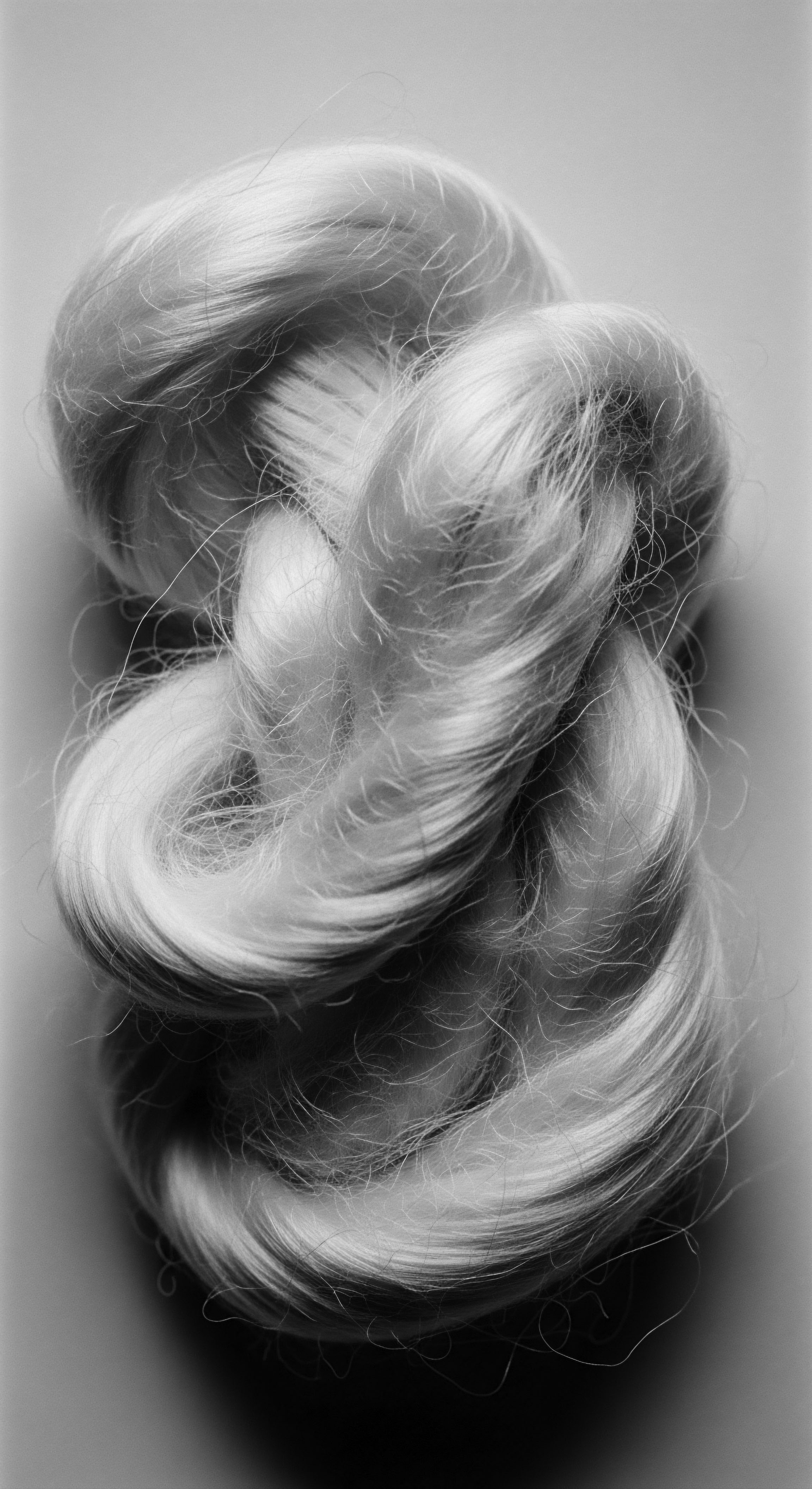
References
- Aguh, C. & McMichael, A. J. (2016). Hair Loss in Women of Color ❉ Medical and Surgical Approaches. Springer.
- Coogan, P. F. Rosenberg, L. Bethea, T. N. & Palmer, J. R. (2021). Hair Relaxer Use and Risk of Uterine Leiomyomata, The Black Women’s Health Study, United States, 1997-2009. American Journal of Epidemiology, 190(1), 101-108.
- Ogunseye, D. (2020). African Hairitage ❉ A Guide to African Hair Care and Styling. Independently Published.
- Tharps, L. (2023). Hair Story ❉ Untangling the Roots of Black Hair in America. St. Martin’s Press.
- Walker, A. (1990). The Temple of My Familiar. Harcourt Brace Jovanovich. (Though fiction, it contains rich cultural insights on hair).
- White, A. J. et al. (2019). Hair relaxer use and breast cancer risk in the Sister Study. International Journal of Cancer, 145(8), 2155-2161.
- Yarbrough, A. (2016). The Cultural Significance of Hair in African Societies. Journal of Black Studies, 47(5), 481-495.
